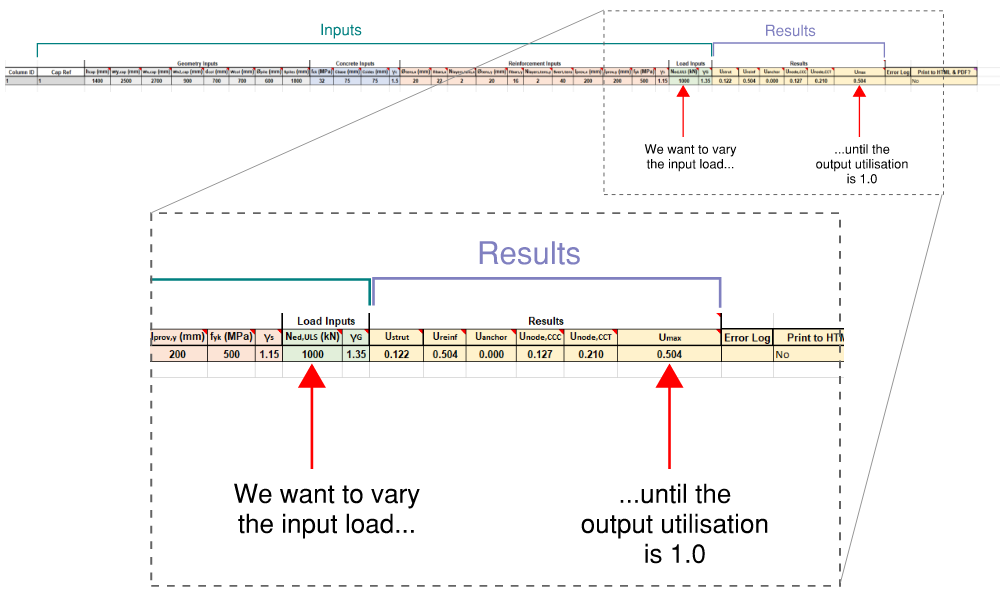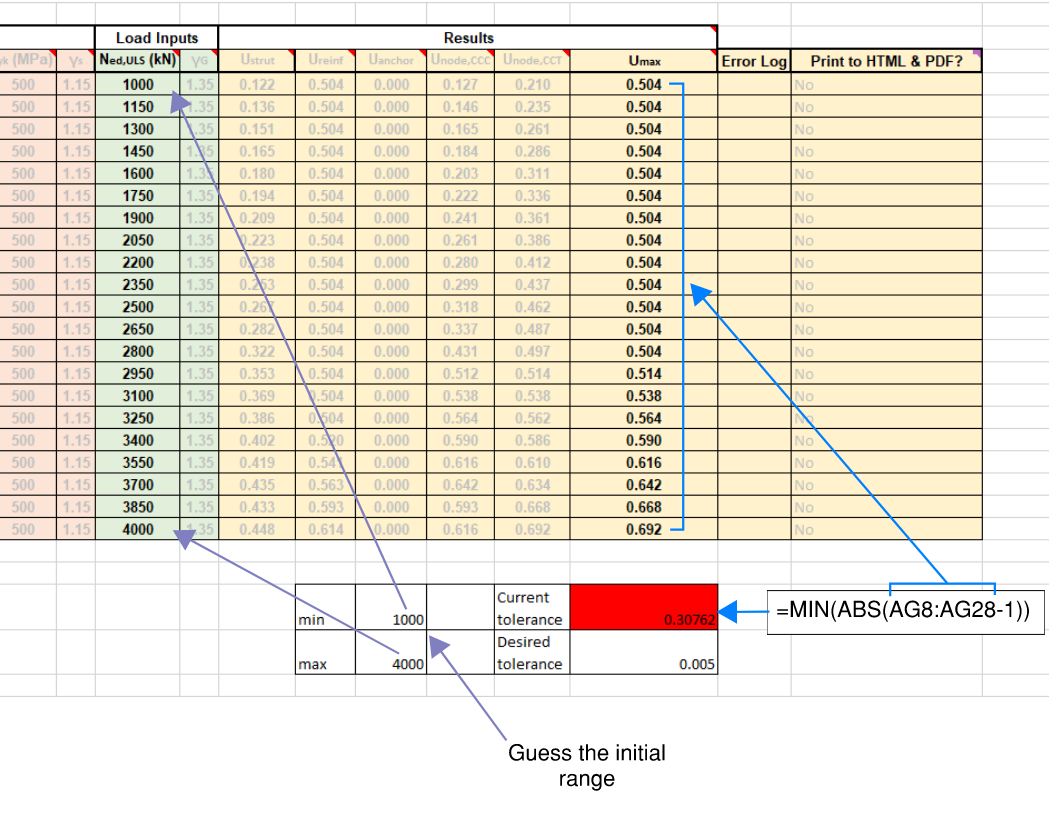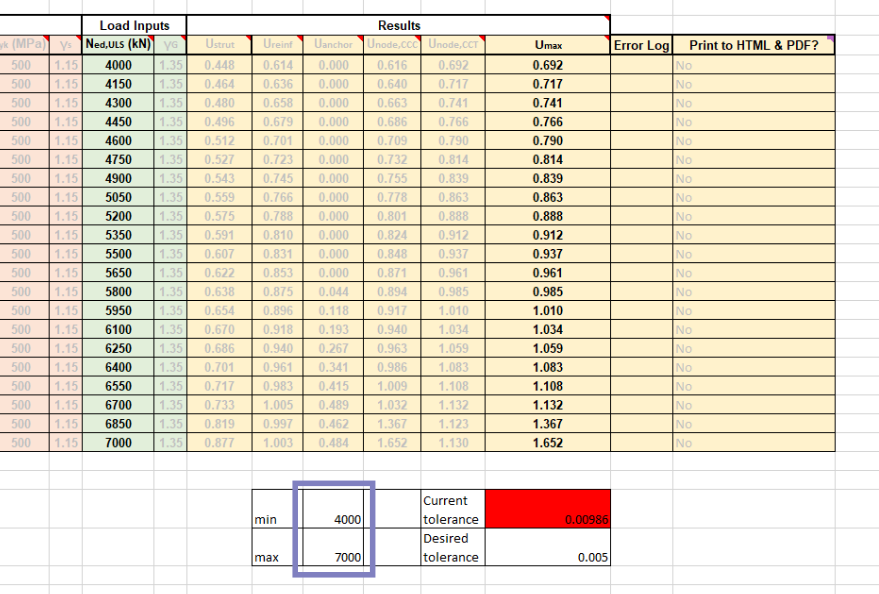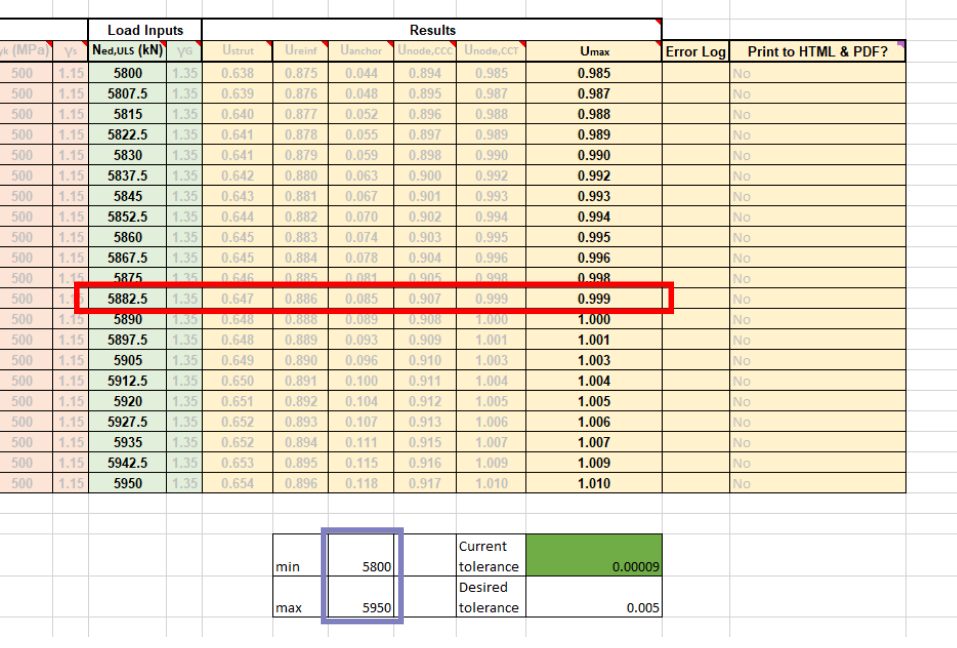Find an optimal solution ⚙️
Example Problem
DesignCheck's Pile Cap functions (a pile cap is a volume of reinforced concrete constructed on top of a group of foundation piles to evenly distribute the load between piles) return a utilisation value for a given force.
For a given pile cap, we want to find the maximum allowable force (i.e. the force which gives a utilisation of 1.0)

A) Simplest Solution (manual)
We could manually vary the input force until the utilisation is within a given tolerance of 1.0.
B) Better Solution (semi-automated)
But, ArupCompute works best when calculations are sent in batches, rather than one at a time. Knowing this, we can set up our spreadsheet to semi-automate the process.
Firstly, guess a range of input values:
Iteration 1

Now adjust this range until result is within desired tolerance:
Iteration 2

Iteration 3

Example spreadsheet used above.
When working with an Excel file full of ArupCompute calls it may take a moment to get your results 🐢. Whilst setting up your spreadsheet it might be quicker to change your settings so that cells are only calculated upon request 🐇 (Calculate Now: shortcut F9).

Don't forget to Calculate Now (shortcut F9) after making any changes. The results will be out-of-date otherwise! (Maybe 🐢 beats 🐇?)
Whilst Excel is waiting for ArupCompute to return results, #GETTING_DATA is displayed in these cells. This can cause problems that do not exist with in-built Excel functions (e.g Goal Seek doesn't work with ArupCompute because of this).